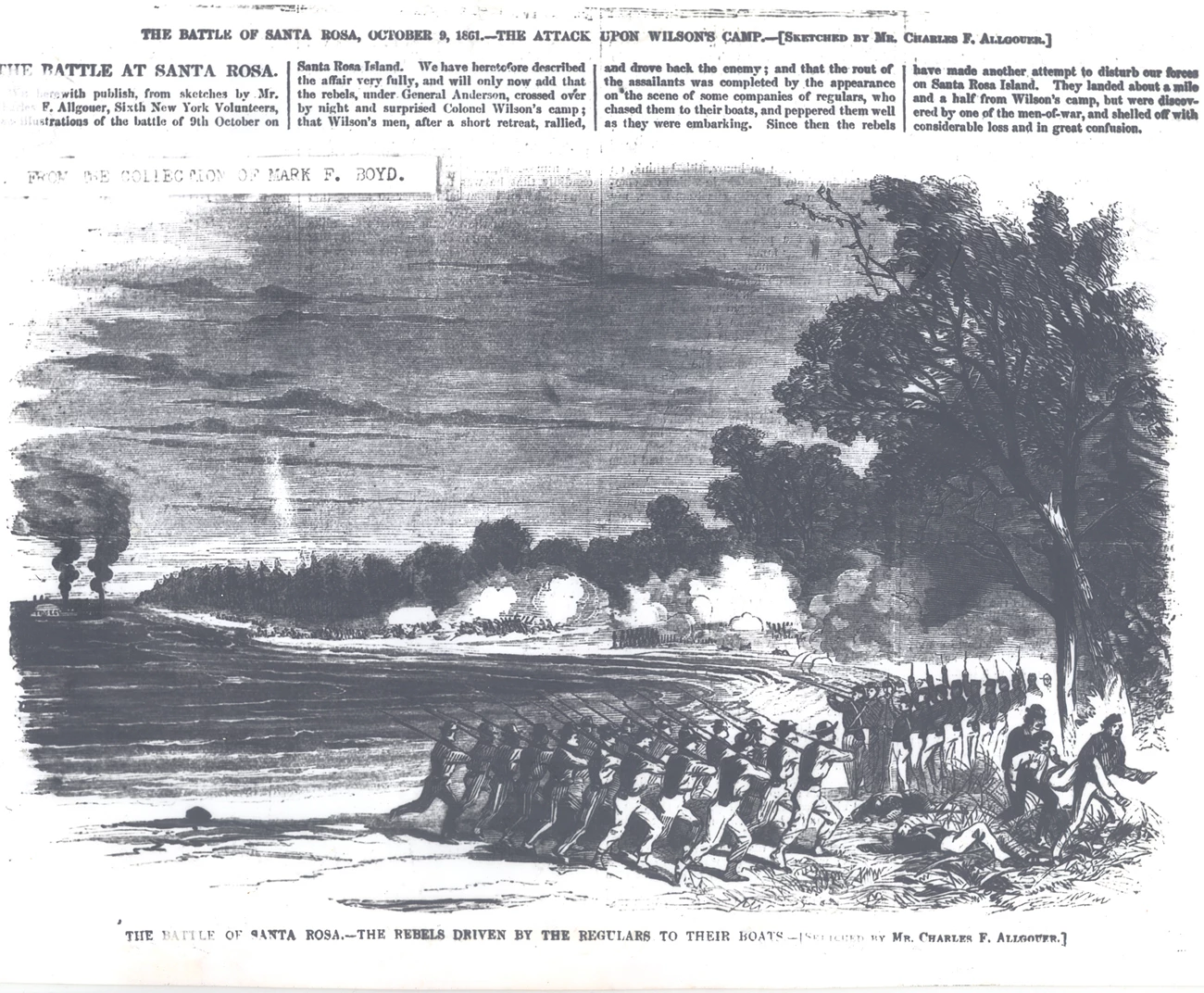Last updated: January 14, 2020
Article
The Battle of Santa Rosa Island

Florida Public Archaeology Network
The air on Pensacola Bay was tense in October 1861. In September, Union sailors and marines destroyed the Judah, a Confederate ship under modification at the Pensacola Navy Yard. Now, Union and Confederate forces waited for the next battle to explode in a growing civil war.
General Braxton Bragg, commander of the Confederate army around Pensacola, struck first. Bragg ordered over 1,000 soldiers to gather at the navy yard on the night of October 8. Bragg told General Richard H. Anderson to take the men to Pensacola and sail them to Santa Rosa Island. Bragg wanted his men to attack the Union’s Camp Brown, one mile east of Fort Pickens. He wanted a victory to punish the Union offenders for burning the Judah.
As Confederates moved across Pensacola Bay, most Union troops under Colonel Harvey Brown slept. Brown’s forces included US Army regulars and volunteers from the 6th New York Volunteer Infantry Regiment.
Brown’s soldiers were spread around the western end of the island, but about 250 volunteers rested together at Camp Brown. The men knew they were safe because the night guards, known as pickets, formed a line stretching across the island from the bay to the Gulf of Mexico. With muskets in hand, the pickets gazed over the moonlit island, waiting to sound an alarm of an attack.
At 3:30 am on October 9, Anderson’s men crashed into the Union pickets. The cracks of shooting muskets intensified as more soldiers joined the battle. The pickets quickly retreated as New Yorkers at Camp Brown scrambled to meet the Confederate attack. Soon the camp swelled with Confederate soldiers who flushed the volunteers away. With the camp in their hands, Anderson’s men rummaged through the belongings of their enemy before setting the camp on fire.
Reports of the surprise Confederate attack were rushed to Colonel Brown at Fort Pickens. Brown ordered reinforcements to strike back while directing another officer to ready the cannon on top of the fort.
The Union reinforcements soon met the Confederates, and both sides struggled to defeat the other. The battlefield, spread over great dunes, a maritime forest, and wetlands, separated men and officers on both sides. In the darkness, large companies and regiments broke into smaller groups of men, all fighting for their lives. Before sunrise, Anderson’s men made their way back to the landing site. With the air still full of flying bullets, the Confederates boarded their ships and sailed back to Pensacola.
The dawn’s early light revealed the cost of the Battle of Santa Rosa Island. General Bragg and Colonel Brown struggled to determine how many men each had lost. Around 148 Union and Confederate soldiers were initially reported as casualties, but the number rose as men later died of their wounds. Both officers claimed victory, but the battle did not pry either army from the Pensacola region.
The battle did change the lives of those touched by the conflict, like Private Paul Gillings and Anna “Addie” Wood. Paul joined the 6th New York as a teenager. His family and friends were over 1,000 miles away when he landed on Santa Rosa Island. The October battle was his first and last. In a letter from Paul’s commander to Addie, Paul’s sister, Addie was told her brother “fell like a true soldier fighting for his country.” Paul’s death and Addie’s broken heart speak to the human toll inflicted upon Americans by the war. Today, he rests peacefully in Barrancas National Cemetery.
Today, Gulf Islands National Seashore preserves the site of the Battle of Santa Rosa Island. Though time has erased many features of the battlefield, you can still walk in the shoes of those soldiers who helped write our nation's history.

Courtesy of the Mark F. Boyd Collection, University of Miami Libraries, Coral Gables, Florida
